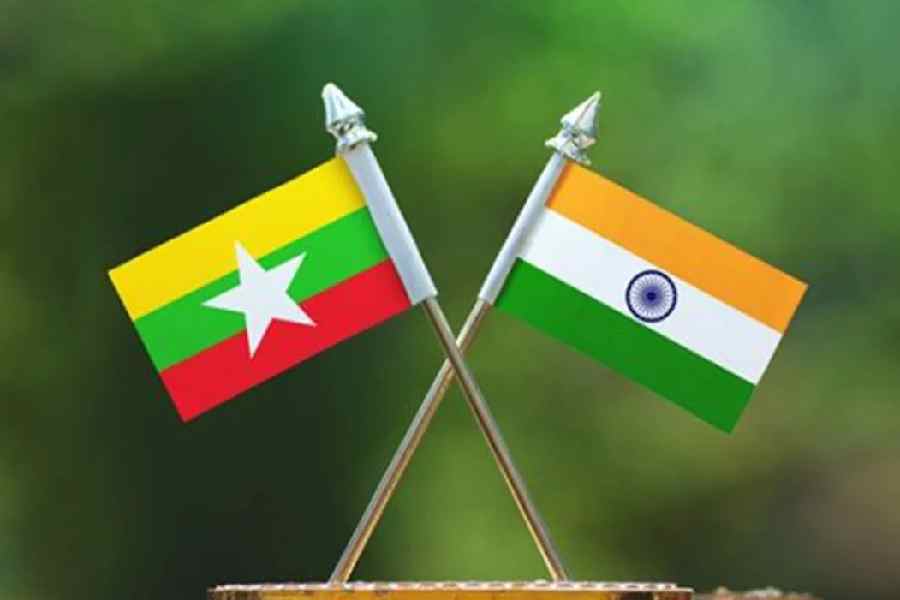India’s Kaladan Multi-Modal Transit Transport Project has hit a major roadblock due to the ongoing civil war in Myanmar. Sanctioned in 2008, this project aimed at creating a grid of interconnections — port connectivity between Calcutta and Sittwe in the Rakhine state, an inland waterway between Sittwe and Paletwa through the Kaladan river, and road connectivity between Paletwa in Myanmar and Zorinpui in Mizoram. Despite the belief that economic development through connectivity may usher in changes in conflict zones, operationalising connectivity plans in such areas remains difficult.
The KMMTTP is a component of India’s ‘Look East’ policy — rechristened ‘Act East’ policy in 2014 — that seeks to strengthen ties with Southeast Asian states. In the 1990s, India ‘looked east’ for new economic and strategic partners and turned to the growing ASEAN nation-states. The northeastern states were fittingly seen as India’s land bridge to connect with Southeast Asia. It was a measure to boost the landlocked region’s economic profile through trade, further providing it an alternative sea access through Myanmar.
The vision holds both promise and merit. But the execution of the project reveals why conflict zones struggle to become good connectivity corridors.
Creating and maintaining on-ground assets in any conflict zone is the first challenge. Despite the availability of funds, the security situation might prevent the creation of infrastructural hardware on the ground. This means recurring delays and inflated budget expenditures. To India’s credit, it has managed to operationalise the project partly but not without several stutters. The work started in 2010 with an initial deadline of 2014 and a revised deadline of 2023. The cost has escalated six times, from 535 crore to 3,200 crore. India had to terminate its joint venture contract as the firms were facing issues with deploying workers after several Indian nationals were abducted by the Arakan Army rebels in 2019. Reports from Myanmar suggest that the junta has lost almost complete control over Paletwa, a crucial nodal point, to the Arakan Army. The rebels are also on the verge of dislodging the junta from the ports of Sittwe and Kyaukphyu. With repeated ceasefire failures and a seemingly absent political solution to the civil war, the immediate threats to India’s connectivity projects loom large.
Even if the hardware of connectivity projects is initiated and completed, it runs the risk of a relapse in conflict zones. As a result, such zones hardly translate into thriving business or community spaces; neither do they draw investors. These corridors are not free of bureaucratic excesses, heavy security restrictions, and logistical delays. None of that translates to ease of doing business, which is required to make an economic corridor viable. Nations are also conservative about the movement of people in such sensitive zones. India’s Union home minister had announced a plan of fencing the 1,643 km-long Myanmar border and scrapping the Free Movement Regime, which allowed people from either side to travel up to 16 km into the other territory. This despite the fact that Kuki, Chin, Naga, Mizo and Zo people have cross-border kinship ties.
Connectivity projects in conflict zones are difficult to implement and even more difficult to sustain. Apart from execution hurdles, economic and social utility are frequently overridden by security. Should nations continue investing in such projects? The answer is yes. This is because these projects attempt to break the spiralling chain of conflict. India thus has to negotiate with Myanmar and the stakeholders to ensure the viability of the KMMTTP. It must strike a difficult balance between security and allowing enough space for trade and social connections to flow. Most importantly, such a project has to be assessed in terms of impact. The KMMTTP might seem to be dead but pushing it through would keep alive the possibility of a delayed but substantive pay-off.
Udayan Das is Assistant Professor, Department of Political Science, St. Xavier’s College (Autonomous)










